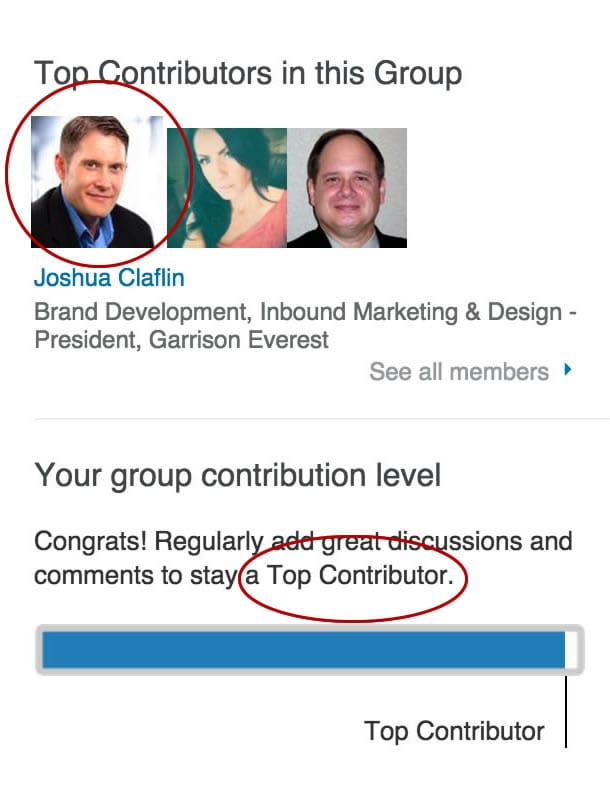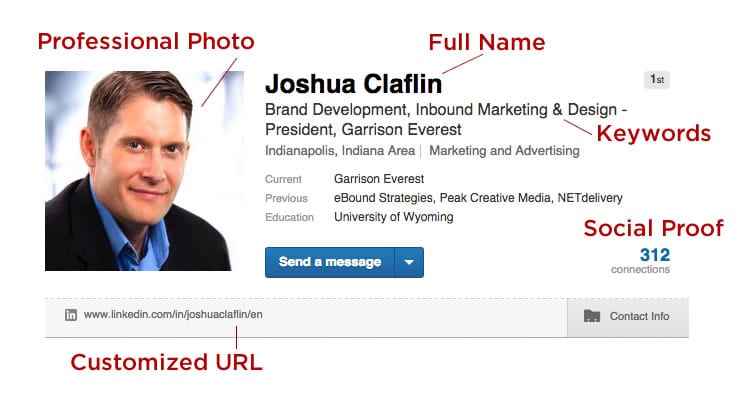
LinkedIn Groups are one of the best ways to position yourself as an industry expert, establish thought leadership and generate new leads. In a survey by Forbes, 60% of users scored Groups as one of their favorite features on LinkedIn. Moreover, with only 16% in the maximum number of groups allowed (50), there’s a reason LinkedIn sees Groups as a valuable personal marketing tool. (Source: Forbes)
By having a strong personal brand within your industry, you can help your business attract more customers and eventually charge higher fees. (Source: Lee Fredrickson).
With a little finesse and tactful posting, you can establish your personal brand within LinkedIn that drives people to connect with your company’s products and services.
In this article, I’ll show you how to leverage LinkedIn groups for your advantage in four stages.
First, there are four ground rules you need to be aware of.
RULE 1: Anything that is not business related, don’t post it. Don’t be that guy.
LinkedIn is a business-based network geared towards professionals. Posting jokes, rude or obnoxious pictures should be saved for Facebook or thrown out altogether.
RULE 2: Help—don’t sell.
When posting to LinkedIn, your #1 goal is to help—not sell. By being helpful and showing people you care, you’ll earn their trust, admiration, and eventual respect.
People join LinkedIn groups for insight—not to hear about how great your latest service or product is—so please abstain from self-promotion.
Content is an exception, but with everyone getting on the content train these days, it is just like promoting your product or service, so be aware. However, by all means share and post your articles to your feed or on Pulse—LinkedIn’s publishing forum.
RULE 3: Write clearly.
Make sure to write clearly and use good grammar and punctuation. Having the ability to write clearly will help your efforts.
TIP: Check out the Grammerly and Hemingway app to become a better writer.
RULE 4: Create a great profile and get a professional photo.
The last rule is to create a great profile and get a professional photo taken! Make sure your profile is clear, contains your keywords and includes a viable work history with recommendations. All these factors will increase search engine visibility.
Ok, so now that is out of the way, let’s jump in.
The first stage in building your personal brand is the awareness stage. Followed by knowledge, insight, and trust. Each stage builds off the former with the trust stage being your goal.
Awareness > Knowledge > Insight > Trust
1. AWARENESS
Commenting and Liking
The first step to engaging your group and building awareness is by commenting and liking others’ posts. This can be as simple as typing in “Thank you for the post.” or a “Like.” People will remember you next time around and may return the favor. The goal is to make some friends and get your image and title into the group’s feed.
Ask for referrals
Ask your group what their experience has been related to working with third-party industry vendors and if they have any recommendations. Most people will be glad to help you out.
2. KNOWLEDGE
Do research and ask for validation of current trends
Once you get the feel for your group and have liked a few others posts and posted a few comments, it is time to post something of your own. The easiest way is to research a topic within your industry and share the data. Pose the research data to your group and ask them to confirm it. By posting industry data or statistics, you share valuable information to the group while playing it safe. This establishes your personal brand as someone who is knowledgeable and helpful.
Identify a problem and make suggestions on how to solve it
If your industry has a problem—it may be good to do a little research and post some of your ideas on how to solve it. Try to do so in a way that doesn’t sound like you’re complaining. Think through potential responses and how you might respond if you stir up controversy.
3. INSIGHT
Newsjacking
Another method is “newsjacking”. Newsjacking is a method of taking the latest news and posting it to your group for comment. You may even write a blog post about it and link it back to your website—being careful to not self-promote. The latest news allows you to position your personal brand as someone who is up-to-date on the latest trends and happenings. There are many tools out there to stay on the bleeding edge of breaking news.
TIP: Set up Google alerts or Twitter notifications (under Settings) that notifies you the minute news breaks.
 At this point, if you’ve posted a few times, you may have noticed that you have obtained “Top Contributor Status.” You may have also begun to notice your picking up more Profile Views. These are all good signs that you are gaining traction towards the coveted “trusted” stage.
At this point, if you’ve posted a few times, you may have noticed that you have obtained “Top Contributor Status.” You may have also begun to notice your picking up more Profile Views. These are all good signs that you are gaining traction towards the coveted “trusted” stage.
4. TRUST
You’ll know you’ve made it to the trust stage if you are getting connection requests and asked for advice via Inmail or invitations to speak. You’ll also notice increased traffic to your website from LinkedIn. These are all indicators you’re achieving trusted status.
Once you’ve received trusted status, you can drive a little deeper into understanding your industry group that will help you learn even more about your ideal customers.
Here are two examples to start posting once you’ve achieved trusted status.
Questions about their business
Everyone likes talking about their business. A great way to get group members talking is to post questions on:
- How’d you come up with your name and what does it mean?
- How long have you’ve been in business?
- What’s been your most valuable lesson?
- What is your biggest success?
- What makes your brand special?
People love to talk about their businesses. Most business owners are not going to give away trade secrets or other information. So keep it high level. Follow up by writing a blog post and share it with your group.
Recommend latest industry tools or reports
Is their some new tool or software that is helping your industry? Using third party subject matter can stoke conversation. Make sure you have a good understanding of any tools you recommend or criticize.
How often should I post? A good rule of thumb in posting is once every two weeks. After you’ve been consistently posting for 4-5 months—yes, this is going to take time.
Start a survey
Another great way is to post a survey about a certain industry topic and offer to also share the results. This is a great way to shape influence. However, this should only be attempted if you’ve achieved “trusted” status.
In conclusion, by posting the right way to your LinkedIn groups, you can expect more connection requests, learn more about your ideal customers, generate more leads and establish your personal brand and expertise. By following this 4 stage process, you now have a framework on how to go about achieving “trusted” status within your LinkedIn group.



